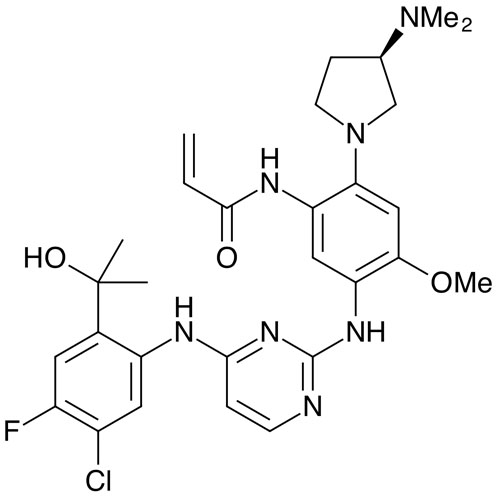Although various tyrosine kinase inhibitors targeting EGFR are already available to treat NSCLC, drugging this mutation is difficult because of its spatial configuration and high heterogeneity.
The prognosis for these patients is therefore generally poor. Another molecule targeting EGFR is being developed by Chinese company Dizal.
Sunvozertinib is an orally available irreversible EGFR inhibitor that targets a wide spectrum of EGFR mutations with wild-type EGFR selectivity, including exon20ins mutations.
The molecule showed potent antitumour activity both in cell lines and in xenograft models. In two Phase I clinical studies, it was tolerated in doses of up to 400 mg (once a day) with the most common drug-related adverse events proving to be diarrhoea and a skin rash.1

Antitumour effects were seen at daily doses of at least 100 mg in NSCLC patients with the EGFR exon20ins mutation across different subtypes, including those with baseline brain metastases.
The median duration of response had not been reached when the trial data were initially reported.
A single-group open-label Phase II trial has been done with adult patients with locally advanced or metastatic NSCLC with an exon20ins mutation who had previously been given at least one line of systemic therapy, including a platinum-based chemotherapy.2
In all, 104 subjects were given 300 mg oral daily doses of the drug. Of the 97 patients who were evaluable for efficacy, 59 achieved a response with a confirmed objective response rate of 61%.
All these responses were partial and were irrespective of smoking history, EGFR exon20ins subtypes, previous lines of therapy or brain metastasis at baseline. During a median follow-up period of 7.6 months, there were 19 deaths.
It was well tolerated, with the most common grade 3 or worse treatment-related adverse events being an increase in blood creatine phosphokinase, diarrhoea and anaemia. Most treatment-related adverse events were grade 1 or 2 and proved to be clinically manageable.
It has been approved in China based on the Phase II data. Multinational randomised Phase III trials comparing its efficacy with platinum doublet chemotherapy in EGFR exon20ins NSCLC are also under way, one in a first line setting and the other as a second or subsequent line of treatment.
References
- M. Wang, et al., Cancer Discov. 12, 1676 (2022).
- M. Wang, Lancet Respir. Med., online ahead of print: doi:10.1016/S2213-2600(23) 00379-X.
